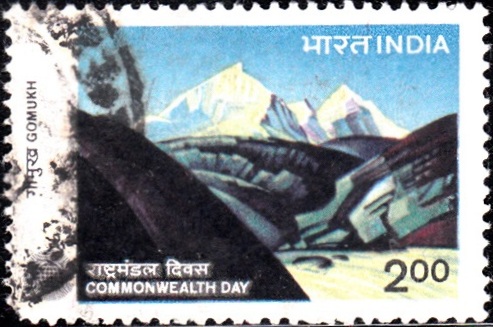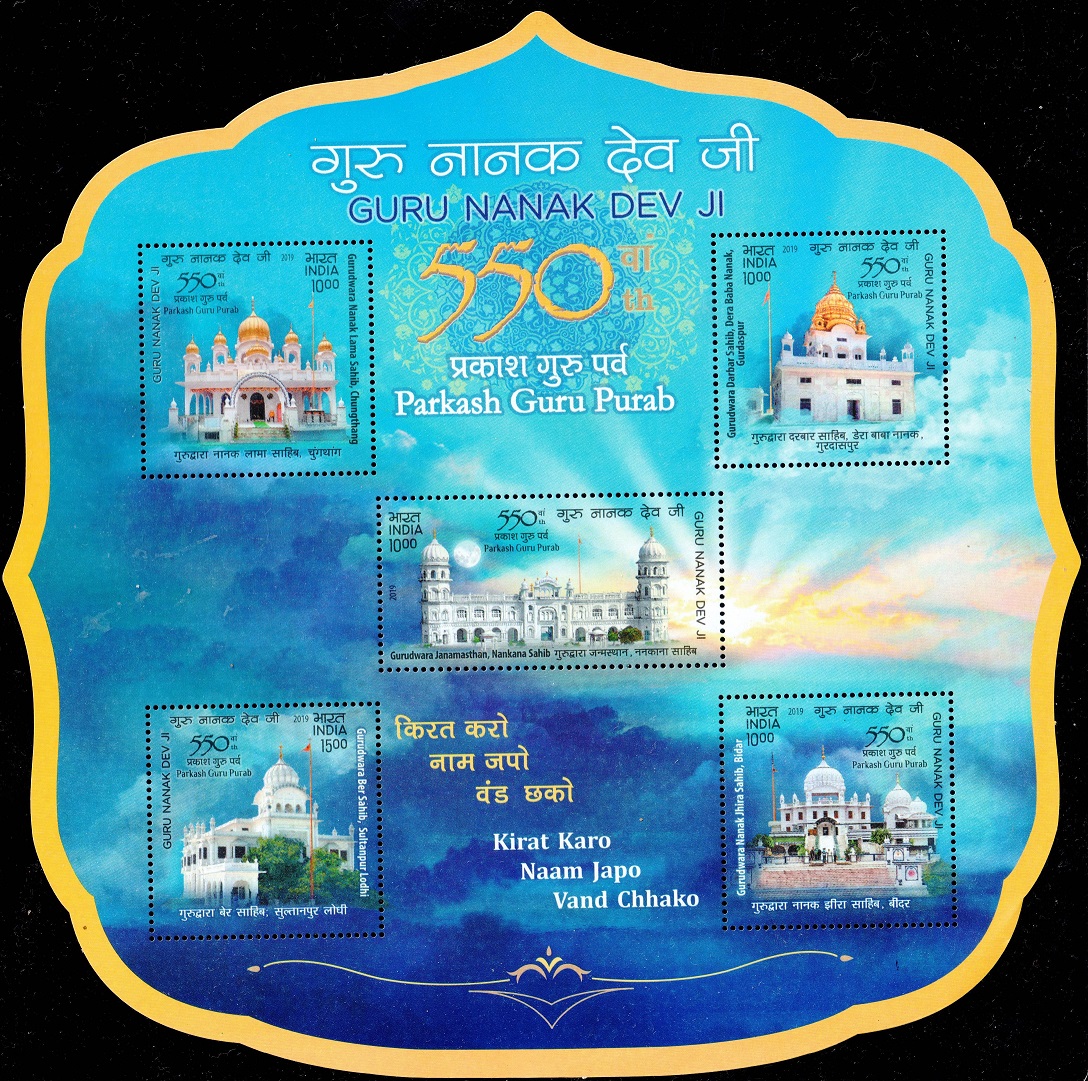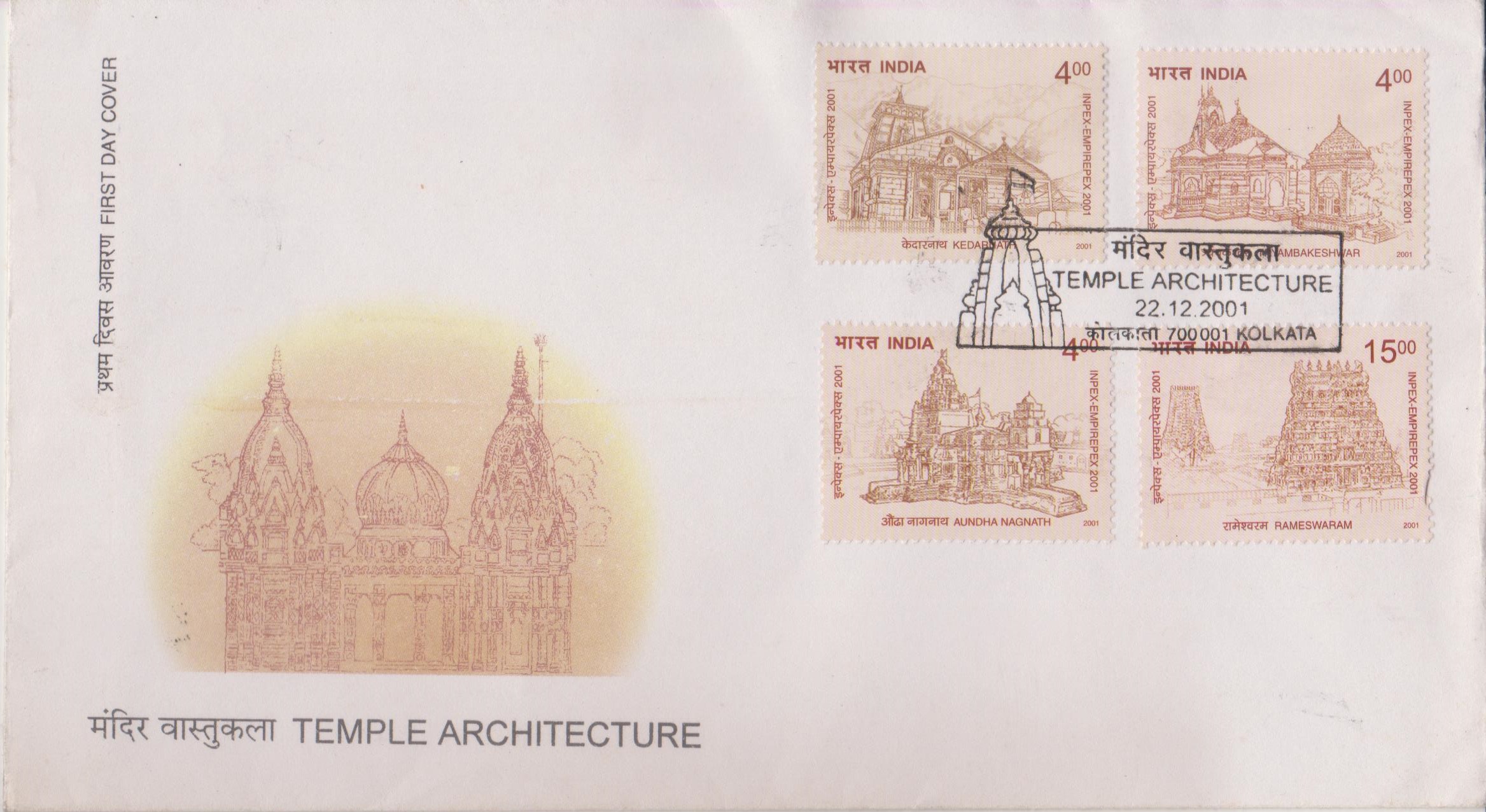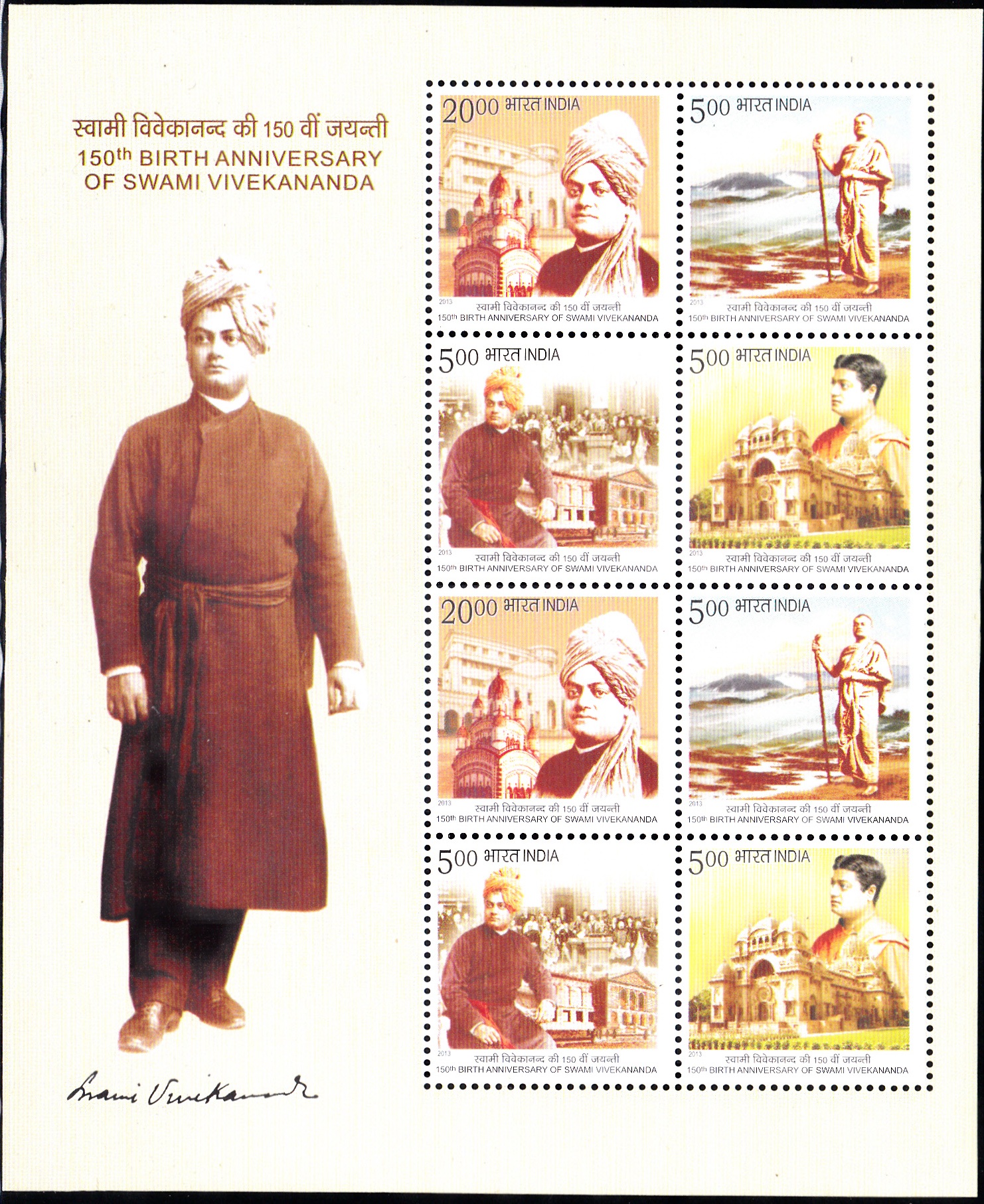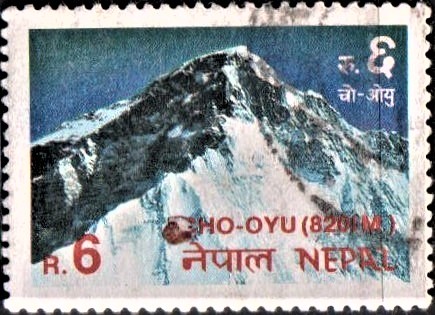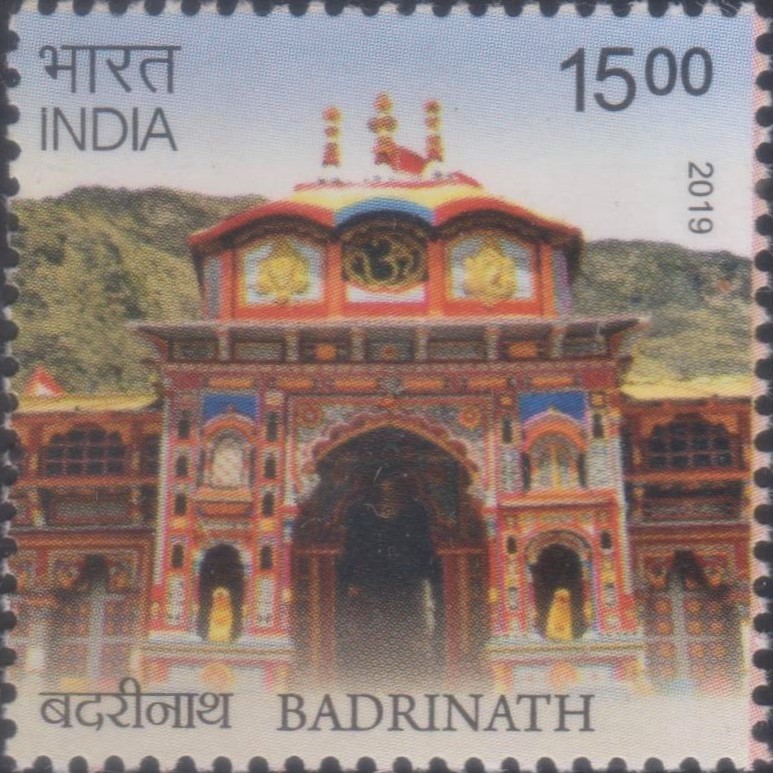
Char Dham, Uttarakhand
Complete Set of 4 nos. of postage stamp on the Chota Char Dham : Yamunotri, Gangotri, Kedarnath and Badrinath : an important Hindu pilgrimage circuit in Uttarakhand :
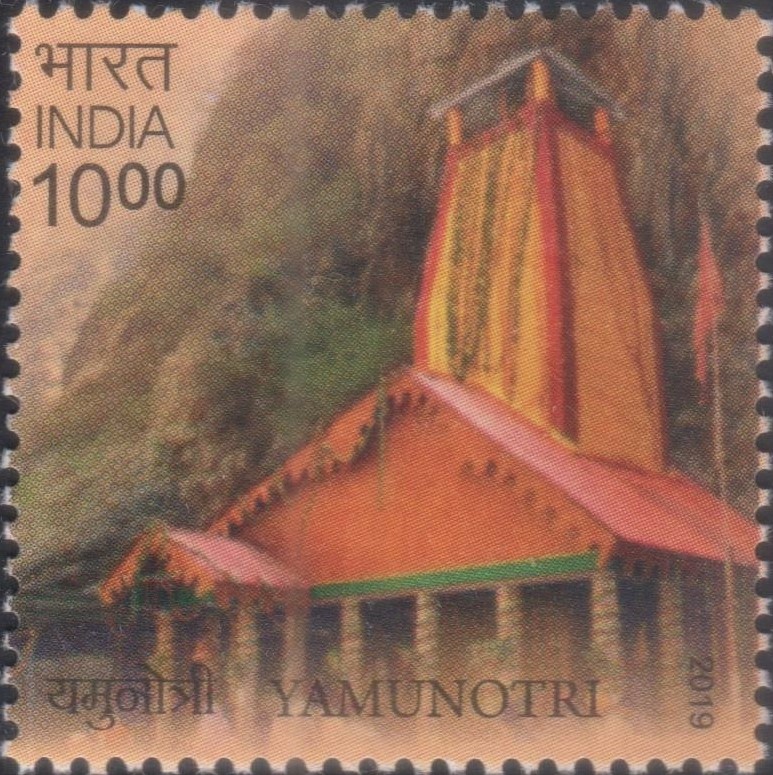
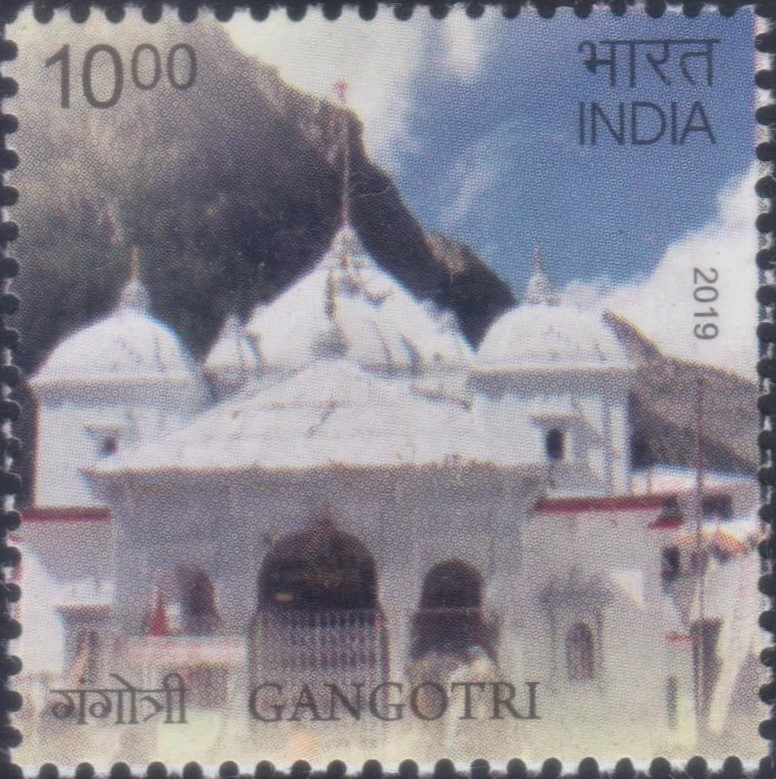
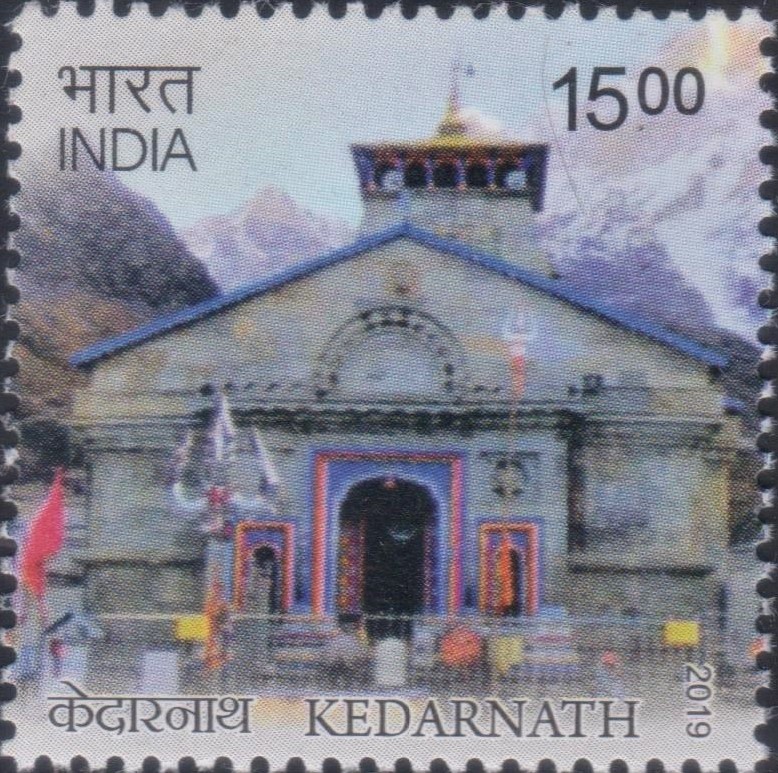
 Issued by India
Issued by India
Issued on Nov 29, 2019
Issued for : The Char Dham Yatra is sacred; it gives the pilgrim a new life and vision. It is a journey of the self towards the Lord and enables one to experience the sublime. Department of Posts is pleased to issue a set of four Commemorative Postage Stamps on Char Dham, Uttarakhand.
Credits :
Stamp/Sheetlet/FDC/Brochure/Cancellation cachet : Smt. Alka Sharma
Type : Stamps, Mint Condition
Colour : Multi Colour
Denomination : 1000 Paise (2), 1500 Paise (2)
Sheetlets Printed : 25000 each of 5 types
Printing Process : Wet Offset
Printer : Security Printing Press, Hyderabad
About :
- Religion has always been a cardinal influence on the belief system and way of life of people across the world. A Pilgrimage is a journey undertaken in the light of this intense faith. People walk miles to fulfil their devotional urge. The word Dham literally means an abode where God resides. The Char Dham Yatra in Uttarakhand consists of four holy sites namely Yamunotri, Gangotri, Kedarnath and Badrinath. According to the Hindu tradition, each individual must undertake this holy pilgrimage in order to find salvation and peace after death.
- Yamunotri, as the name itself suggests is derived from one of the most holy rivers of India, the Yamuna. Being the first point amongst the four dhams, it is believed that taking a holy dip in Yamunotri rids the devotees of their sins, washes away the evil deeds. Besides this, there is a temple of historic significance which was built by the king of Tehri in the year 1839. It houses the idol of Goddess Yamuna in the form of black marble idol and also of Ganga Devi in white stone by the side of Yamuna. One of the astonishing characteristics of the place that attracts the pilgrims is the hot water springs found near the temple. The spring is called Surya Kund; devotees boil potatoes and rice in the hot boiling water, which is later accepted as Prasad of Devi.
- Gangotri Dham was built in the reverence of Goddess Ganga, considered to be an epitome of forbearance and sacrifice as she observed herself into the mother Earth to protect humanity from destruction. The temple stands amidst the serenity of exquisite natural beauty facing the Bhagirathi river. The river originates from a glacier called Gaumukh, almost 18 kilometres away from Dham. It is one of the oldest rivers in India and holds a special and sacred place in the heart and soul of the Hindus.
- Kedarnath, situated in the Rudraprayag district of Uttarakhand is the most far flung amongst the Char Dham heritage sites. Located at a height of nearly 3500 metres above the sea level, the Kedarnath temple is covered in snow throughout the year. The spirituality of the place, the ecstatic experience of seeking the blessings of Lord Shiva in the lap of nature, the snow-capped mountains and the peerless beauty of the temple combine to produce an absolutely fulfilling experience for the pilgrim. Chanting of Vedic hymns and extensive religious rituals are a part and parcel of the functioning of the Shiva temple. The tradition of carrying the idol down to a village called Ukhimath during the winter season is celebrated like a festival.
- Badrinath or Badrinarayan Temple is the most visited temple of India. The temple is located in the Chamoli district of Uttarakhand alongside Alakhnanda river. It has got its name from the ‘Badri tree’ under which Lord Vishnu was believed to have meditated, oblivious of the extreme weather conditions of the place. The temple has a glorious historic significance as its name is mentioned in ancient religious texts like Vishnu Purana and Skanda Purana; also it is defiled in one of the earliest texts composed by Tamil saints called the Divya Prabandhan. The festival ‘Mata Murti Ka Mela’ is one of the most prominent festivals celebrated at the temple with great pomp and show. It is the commemoration of the descent of river Ganga on mother Earth. It is believed that the mother of Badrinath divided the river into twelve channels for the well-being of humankind; she is therefore, venerated and remembered during the festival. The temple is of immense significance for the Hindu community as it allows them to connect with their ancestors. They offer various oblations in the temple for their ancestors with the help of a priest.
- It is believed that these sites are interconnected and the journey is said to be complete when the devotee visits four of them together. Although the journey is tough, challenging and tiresome given the unfavourable weather conditions, the pilgrims find solace once they complete it. The devotees visit the Char Dham with a sense of hope that God will bring unto their fold, happiness and well-being alongwith prosperity to their families. Every year thousands of devotees undertake this pilgrimage to the Char Dham in Uttarakhand; it has also attracted foreign tourists who aspire to observe the Indian culture closely.
- Text : Ms. Anika Singh.


